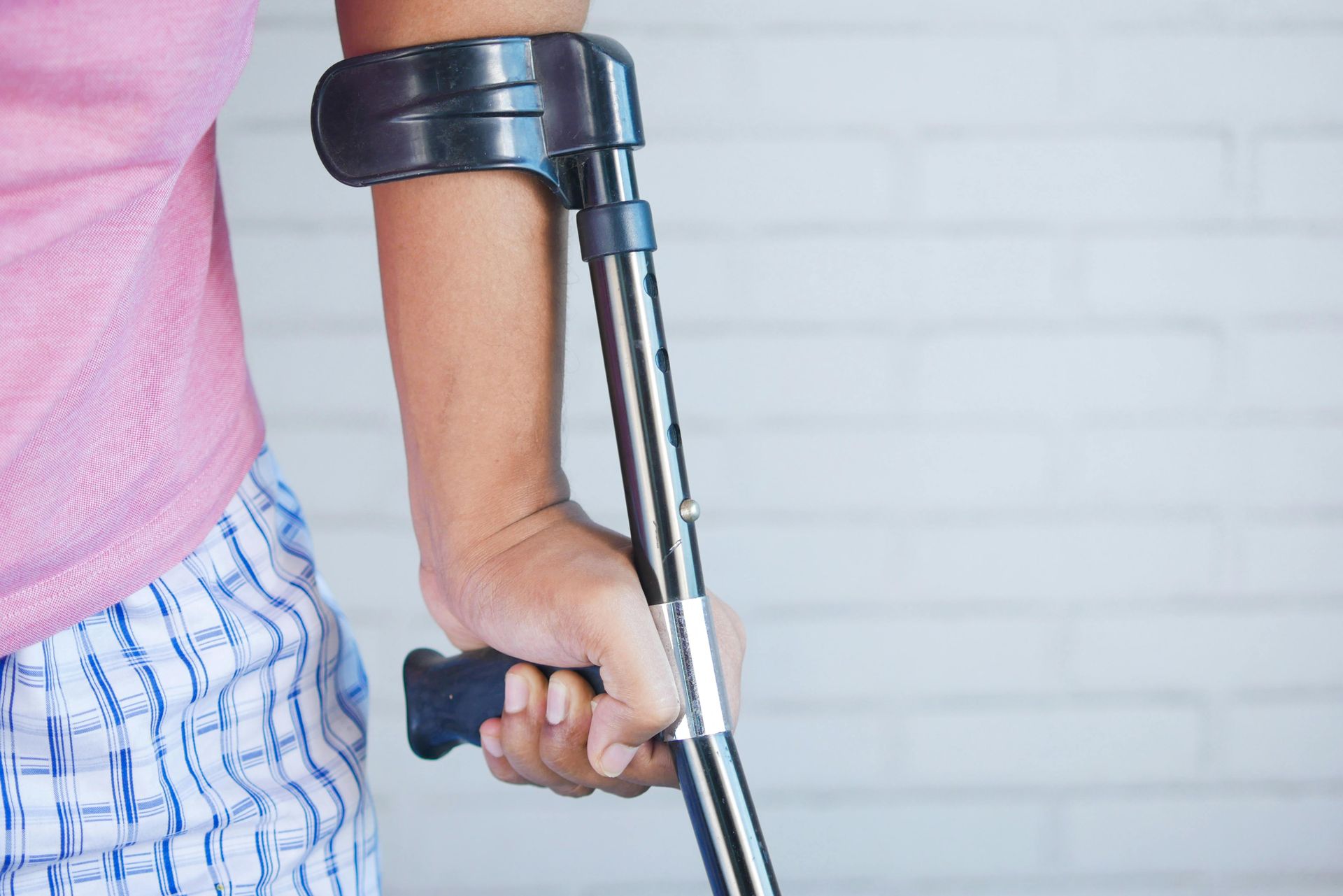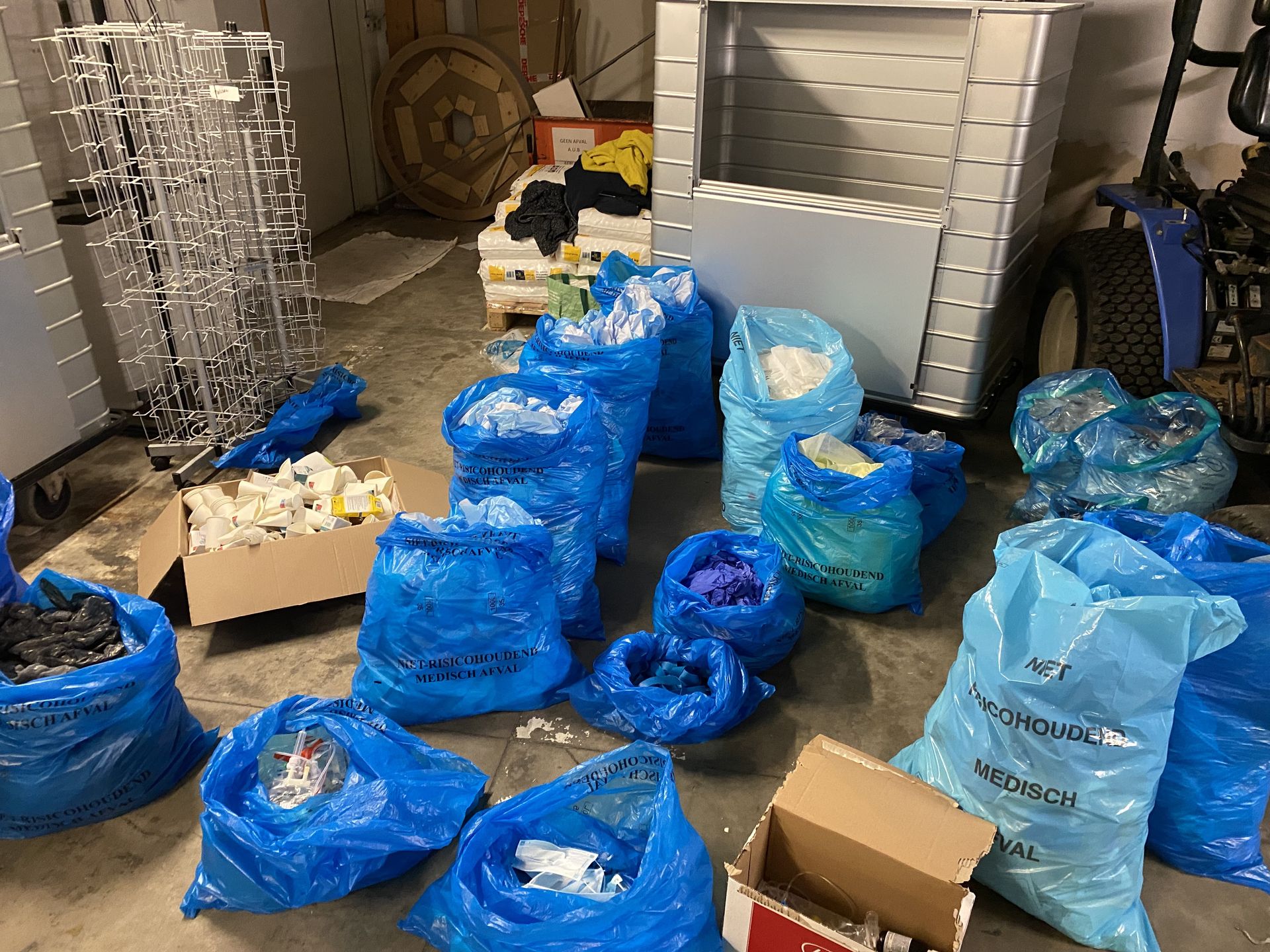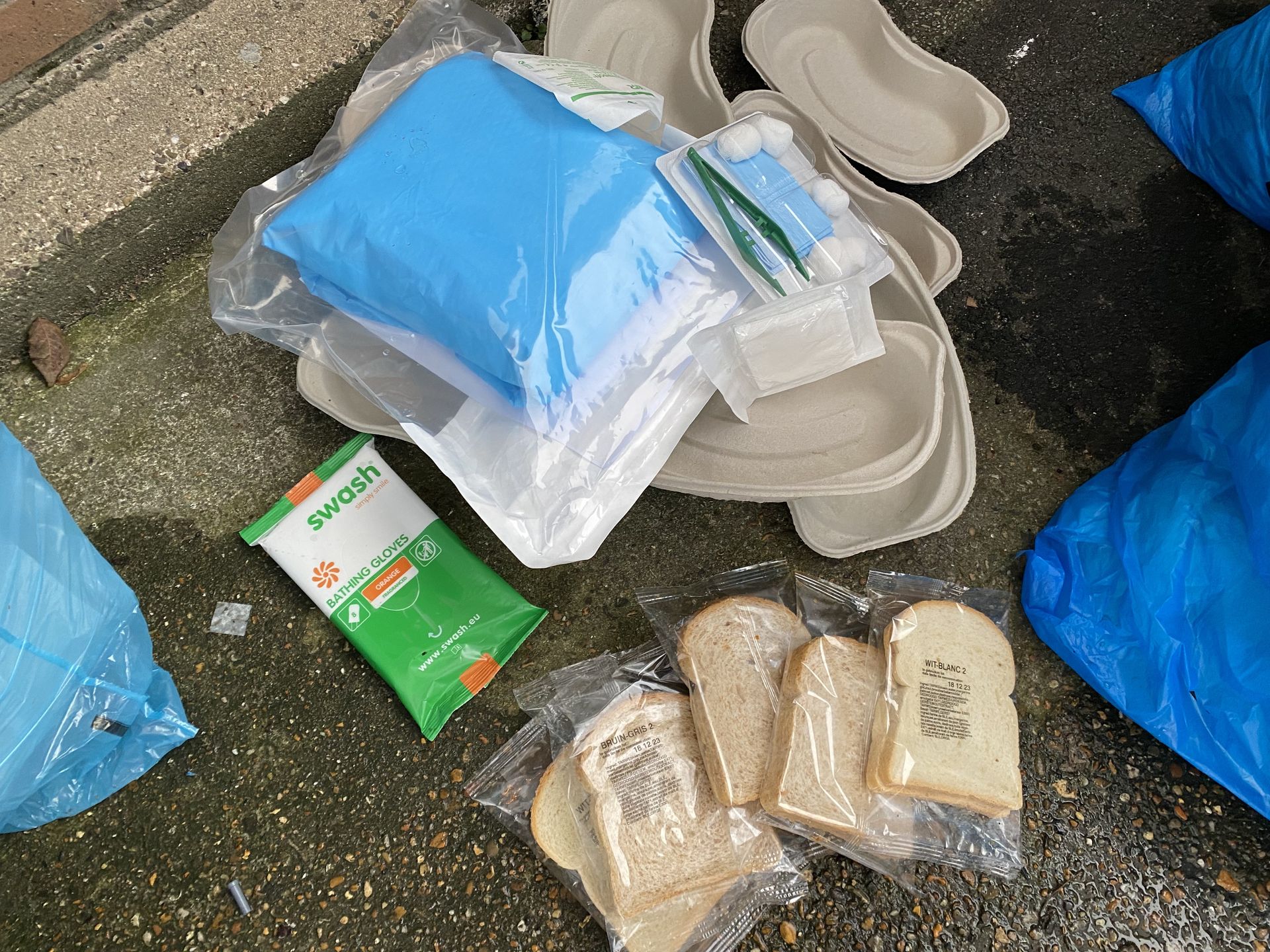Dr. Brecht De Tavernier presented at the 14th of October at the European Society of Emergency Medicine Congress in Copenhagen about making emergency departments more sustainable.
He explained how he started the decarbonization of his emergency departments in Antwerp, Belgium. These actions were the starting point of our company Net Zero Healthcare Impact. With NZHI, we aim to support the decarbonization of the entire healthcare system.
The first step towards a low carbon department is a mapping the actual situation, this means calculating the CO2 emissions in order to define the possible interventions to lower the impact.
At the emergency departments of ZAS Vincentius and Augustinus in Antwerp, Belgium, where 61626 patients were treated in 2023 the annual CO2e emissions were 496 232 kg CO2e. The departments caused 16% emissions in scope 1, 9% emissions in scope 2 and 75% in scope 3, mainly consisting of medical instruments, equipment and consumables (41% of total emissions) and pharmaceuticals (13%).

Together with a team of 3 ED nurses and the ZAS sustainability coordinator Dr De Tavernier selected 20 interventions to reduce CO2 emissions (and sometimes costs or other environmental impacts such as waste).
1. Be critical to which patients really need IV paracetamol
10% of patients in the studied EDs receive IV paracetamol.
1g of paracetamol has an impact of 0.00798 kgCO2e in tablet form, while 1g of paracetamol syrup has an impact of 0.3591 kgCO2e and the same dose in intravenous administration has an impact of 1.333 kgCO2e. The pill form therefore has a CO2 impact that is only 1/200th of the intravenous form, while the pill form has a CO2 impact that is approximately 1/45th of the syrup form. (1)
By switching from IV to PO formulations you also save 80% costs and you save a lot of glass bottles in your waste (its hazardous medical waste). So, be critical to which patients really need IV paracetamol!
2. Apply lean management in your medication cupboard
The EDs had an availability of 529 unique medicines but the team found out that 127 had zero annual use and 18 had only a single use in 2023. The team selected 108 medicines that they could remove from the cupboard without impacting quality of care. Working on 2 campuses, the sustainability audit also showed different availability of medicines (over 100 in each campus that were only available on that campus). The lean management audit helped to resolve this, streamlined both cupboards, reduce unnecessary stocks and avoided expiring medicines.
3. Remove plastic bottles of water from your ED
The audit showed a stunning use of 12300 plastic 1 L bottles per year. Two tap water taps were installed in one emergency department, and it will be installed soon in the other department. Currently, only cardboard cups are used and in the coming year a campaign will be launched to stop using bottled water. The cost savings of these trends are surprisingly high!

4. Phase out nitrous oxide: it’s a 200 times more potent greenhouse gas than CO2
N20 is a very potent greenhouse gas (200x stronger than CO2 and it also remains much longer in the atmosphere) The EDs used nitrous oxide for pediatric procedural sedation but the overall use is became very low over the years, especially since intranasal sedation via atomizers with ketamine, midazolam and fentanyl was introduced some years ago. Also, the nursing teams indicated that they lacked experience and training with the use of nitrous oxide as the use became substituted by intranasal inhalation. The ED green team together with the medical and nursing leadership of the department decided to stop the use of N20 in the department, which resulted also in cost savings (a 2L bottle costs around €500). (Unfortunately, and completely not related, we do see more and more use of N20 as a street and party drug in Antwerp… Maybe we should start public health campaigns about the environmental impact of nitrous oxide too – not only mentioning that people can get a lifelong quadriplegia from it but that it contributes to global warming too ;) ! )
5. Reflect about more sustainable identification bracelets
Plenty of identification bracelets were found in the garbage bags! Here we don’t have a custom solution, but every patient gets a plastic identification bracelet. We are currently reflecting about possible solutions. If you believe you have a solution, let us know!
6. Reduce the use of photocopy paper
Digital request forms for laboratory and radiology and digital medication prescriptions transferred on an ID card already dramatically reduced the photocopy paper use in the EDs. Still the annual use is 170 000 papers per year, which serves mainly insurance purposes (sick leave certificates, employer insurance,). Governmental agencies, who often request an extra medical certificate ‘because the insurance certificate has to be completed on exactly this type of paper’ should urgently stop requesting this double work (which also takes double time from physicians that contributes zero value to healthcare!) and accept the general insurance and sick leave certificates that physicians complete. Physicians, electronic health record providers and governments must reflect about means to send insurance papers and sick leave certificates in pdf format directly to a patient via email or other digital means instead of always printing it. Although it’s probably naive, hopefully this can also reduce the number of patients who call the hospital afterwards because they lost a printed medical certificate.
7. Reflect about systems to recirculate crutches
Although the audited EDs currently don’t have a solution, they are reflecting about means to avoid selling the crutches to the patient or recirculating crutches that are currently in use. These crutches disappear in sellers and attics after some days and weeks of usage and reflect a significant cost to people. Most people and families need crutches only a couple of times in their life. Does your hospital or health care system have a solution for this problem? If so, please let us know!

8. Singe Use Tourniquets: we need skilled IPC negotiators
Based on Infection Prevention Control (IPC) measures, multiple use tourniquets were switched to single use tourniquets in the past. For every 100 patients in the studied EDs, 45 single use tourniquets were used. There are multi-use tourniquets that are easy to clean with alcohol-based solutions and even allow for repairs. The ED green team is currently looking at alternative providers and will discuss this with supply and IPC teams. This is one example, but in many examples, the IPC question and the IPC nurse is the one to convince that your proposed solution is at least as good as the current single-use standard. By the way, COVID also helped us a bit scientifically by proving for example that excessive glove wearing increases pathogen transmission, so maybe it’s a good moment to start the conversation! And this brings us to point 9.
9. Gloves: the enemy within!
The gloves discussion, finally! In our benchmark study 2,4 pairs (or 4,8 gloves) were used per ED patient. We noticed sharp differences between two campuses with almost a double use of gloves in the one campus compared to the other one. Gloves are also culture and by making doctors and nurses more aware of the exact scientific place of gloves a reduction by – what I believe – 30 – 50% is possible. Besides a high impact on CO2 emissions, gloves require a lot of water during the production. But on the other hand, we will always need gloves, and the final solution will be that gloves are made of one type of polymer instead of a mixture and become a waste stream that can be separated and recirculated. (Currently, most producers blend different types of polymers because one type provides the necessary quality characteristics such as water impermeability, stretchable strength, …but this polymer is more expensive and the other polymer that does not contribute to the necessary characteristics is very cheap. More sustainable gloves are absolutely a priority that hospitals should communicate to suppliers, and it should be a focus point for joint-statements-of-demand.

10. Single Use Bed protectors: why on earth did we go down this path?
In the waste scan of the ED study, we found for 89% of patients a bed cover in the waste bags. Bed protectors caused 16 – 22% of the volume and tonnage of our waste. Together, they also cost a significant amount! Talking to older nurses in the department, the explained me that linen sheets were the standard of care in the hospital. (Both EDs create already together around 50 kg of dirty linnen that is washed every day) Also, EDs must reflect if every patient needs to lay down on an ED stretcher. Should we not use dental and normal chairs more for fast-track patients? At the EUSEM congress this was also stressed as a strategy that could fasten turnaround time in our EDs. This will also result in less waste (and less costs!). Is it not possible for producers of stretchers to produce stretchers without the need for matrass protection and make it more washable, unless that patient has visual blood and body fluid contamination? Here, we got work to do to talk with the suppliers and look at our own ED flows! Probably a talk also with the laundry service of your hospital is useful to get an estimate of the opportunity cost (and environmental impact) of washing extra linen.
11. Plastic bags: your admission ticket!
Whenever an ED patient gets admitted, the clothes are often placed in a plastic bag as many people – with the exception of the ultra-prepared stroller group – arrive without preparation in our ED. Hospital admission accounts for 15 – 25% of the population in our benchmark study. In the audit, 11,7% of ED patients receive a plastic bag, this equals 58,7% of the admitted ED patients. We should reflect about more sustainable solutions for this problem, but the current plastic bags are very cheap, so the cost of a more sustainable solution should be low!
12. Single use suture kits and single instruments: time to recirculise your scissors
6,3% of the patients in the benchmark study are in the ED because of a wound that requires suturing. Currently, the EDs are using single use instruments that are imported from Asia and are after a single use dropped in the hazardous medical waste bin, generating a tremendous impact on CO2 and costs. After the audit, the ED found a Belgian company that delivers suture kits that are reusable (instruments are reused for 3 years) and sterilized in the company and the EDs are currently together with the supply department looking into implementing their solution, that is also 60% cheaper than the current process! In the longer future, hopefully suture kits including the tray are fully circular and can be sterilized in the central sterilization department of the hospital one day!
13. Feel at home: sort better! (and make your occupational health service happy)
Study after study shows that we recycle as human beings much better at home (over 90% compliance) versus a work environment (typically 60 – 70%). Why that is study material for behavioral psychologists – we are not but when we analysed twice the waste collected during 24 hours in an ED we certainly felt like we observed a lot of outcomes of human behavior – including a significant amount of empty beer cans from brands that are as far as the green team is aware not for sale in Belgium – and we do have many beer brands! Fact is that in our benchmark study we found on a total of 56 kg of nonhazardous waste bags, 1.18kg was hazardous medical waste including needles (especially needles that are used for sampling urine seem to be high risk to arrive in the wrong waste stream, just as glass bottles and blood-stained containers.). This also poses a risk to the occupational health of the logistics team and the employees of the waste management company. On the other hand, non-hazardous waste such as bed protectors also arrived in the hazardous waste bins and this is mainly expensive: the waste treatment costs around €200 per tonne non-hazardous waste and €800 per tonne of hazardous waste. By the way, the hospital receives money for a tonne of paper and cardboard (well, they will not get rich from it, but at least it’s a small fee and it avoids mainly the costs of the non hazardous medical waste). Also plastic medical and drink cartons (PMD in Dutch) is very cheap. So, together with your team: sort better, save costs and make your occupational health service happy!

14. Avoid throwing intact consumables and packed foods in the waste bin: put stuff back in the trays or send it back to the kitchen
Unfortunately, we found a surprising amount of packaging that was never opened. Often this was the bread that was expired (‘swill’ or food waste will be in the future a good source for heating hospitals!). But it also included a full sterile catheter set, wound care sets and packed bathing tissues – the classic: 100 tissues in one bag of which you use 3 and you throw the bag with the remaining 97 in the bin. It seems sometimes we have a bad habit of taking a consumable to a patient room or cubicle, deciding that we don’t need it and then throwing it in the bin! Probably also a chat with your IPC and your kitchen team might help here!

15. Include hospital specific waste streams such as PVC sorting
As our economy is evolving from a linear model towards a circular model, it will be more and more important to split waste in different streams. Hospitals use certain chemicals and polymers in high quantities. During the audit, the environmental unit of the hospital introduced a separate stream to split polyvinyl chloride or PVC, used in many tubings of oxygen delivering devices, ventilation circuits, but also some IV lines and bags. In the near future, we will see more and more hospital specific streams appearing although things need to remain manageable, and nobody wants to decide in which of the 28 bins in an operation theatre to throw a specific piece of garbage. Here will be room for waste companies to specialize in healthcare waste streams (hello, AI trained healthcare waste robots?!) and for healthcare supply companies to produce single polymer products or components and finally to recirculate as much as possible.
16. Speak with your lab about decarbonizing
EDs play a crucial role in diagnosing infectious diseases, isolating patients, and of course making the right admission or home decisions. This infectious disease work creates a use of a huge amount of blood culture bottles (and they are expensive too!) and many nasal swabs. Labs that analyze all these samples generate a big environmental impact, mainly through the processes of culturing on agar plates and the many machines that are used 24/7 in a lab requiring a lot of energy. The solutions to decarbonize a lab are very different to the solutions to decarbonize an ED but we believe talking to each other about the environmental impacts and working towards solutions together is important!
17. Electric ambulances: time to electrify your prehospital work!
In the audited EDs, Volvo X90s are used as MUG (Medical Emergency Group) vehicles. The emissions are 215,75 g CO2 per km and the fuel use is 9,4 l petrol per 100 km. Based on the annual number of kilometers driven, the MUG vehicle emitted 5,6 ton CO2 but in practice, it spend quiet some days in the car dealers garage for repairs and maintenance. During those periods older replace cars were used that emitted a multiple of emissions! So, it’s time to electrify our fleet! Especially for rapid response vehicles this is perfectly feasible. And the range anxiety is not justified anymore with current long range battery standards above 500 km autonomy. (For the audit we studied exactly that question: the MUG vehicle could drive theoretically 9 days without recharging based on the historic number of kilometers driven per day – it’s an inner city ED and distances are often short). Finally: there is a strong economic case to electrify: despite a higher initial purchase cost, petrol and a lot of taxes are saved, and based on the total cost of ownership calculations the electric MUG vehicle is after 1,25 year of use already the cheapest option. (Overall, vehicles are used for 4 years in the studied service). And the final argument to convince your chief paramedic or chief prehospital nurse: electric vehicles hardly require any maintenance – so no expensive replace car bills and no measures to arrange the transfers of equipment, communication, …. It’s just plug and drive! For electric ambulances, one must admit, the market is currently still maturing, and things seem to take a bit more time. If anyone reads this post and drives an electric ambulance: please let us know your experience (and the car brand and the autonomy!) So, time to electrify your prehospital work!
18. Involve your healthcare value chain – and learn from them
Decarbonising an ED takes an effort from many people! Many of the processes are controlled by persons outside your department. Many products are produced by other companies that supply your hospital. So, get to know your supply and purchasing teams – and especially that colleague that is interested in sustainability! Ask them how much sustainability currently contributes to the evaluation of tenders (many healthcare green deals propose to include up to 20% on sustainability criteria). Speak to your waste people – they will love it that you try to reduce their work. Maybe even one day, try to bring some of your main actors in your ‘health care value chain’ – the full chain of companies in which your hospital is ‘the middle men’ – together. Sustainability can be a good way to get to know all these people – also handy for other non-related stuff you need to fix later!
19. Gather a strong team and go green – together!
Sustainability is a great topic to work together with likeminded individuals. The enemy is not another medical service or an inappropriate referral, it’s not a nasty politician that makes unsustainable decisions, it’s CO2 and you don’t see or smell it but it’s there, and every year there is more of it! But you can measure it, and you can act upon it. For the measurement you need either to do a lot of homework or consult people who do it for you (it’s a good start to talk with your sustainability coordinator of your hospital and if your hospital does not have one – then talk to your hospital director to get one a.s.a.p. or hire the expertise externally), but for selecting interventions and for the implementation you need a whole team who know the medical department well and are able to communicate and convince other team members. Year after year, your team will see the impact of their work, and things can move fast in this domain! And the good news: other hospitals in your country or Europe as a whole (many of the sustainability legislation is European stuff anyway) have the same issues. So, meet, learn and move forward together!
20. Don’t be a green blusher! Communicate, communicate, communicate!
So, you do all these mega efforts of step 1 till 19 (and many other interventions not in this list)? Your medical department is amongst the most sustainable in your hospital and your country? Great work, you are now an ED sustainability rockstar and you deserve a stage! And prepare for this moment when you do your stuff: waste is very visible, so take photos when you do a waste scan! And show them to your colleagues, on social media, in your hospital staff magazine! Make visible campaigns to address stuff and communicate about your own efforts! We don’t want to green washers (nope, measure the real thing, and pick impactful interventions – so no forever chit-chat on the exact type of cups you use in the ED please!) but we don’t want to be green blushers either. Communicate, communicate, communicate!
There are many more impactful interventions in an ED that did not make it to this list. If you have one, please let us know, and we will update the list one day!
*Reference: Wilson N, Dalton C. The embodied carbon of paracetamol and the consumables associated with different routes of administration in pediatrics. The Journal of climate and health 16 (2024): 100298
